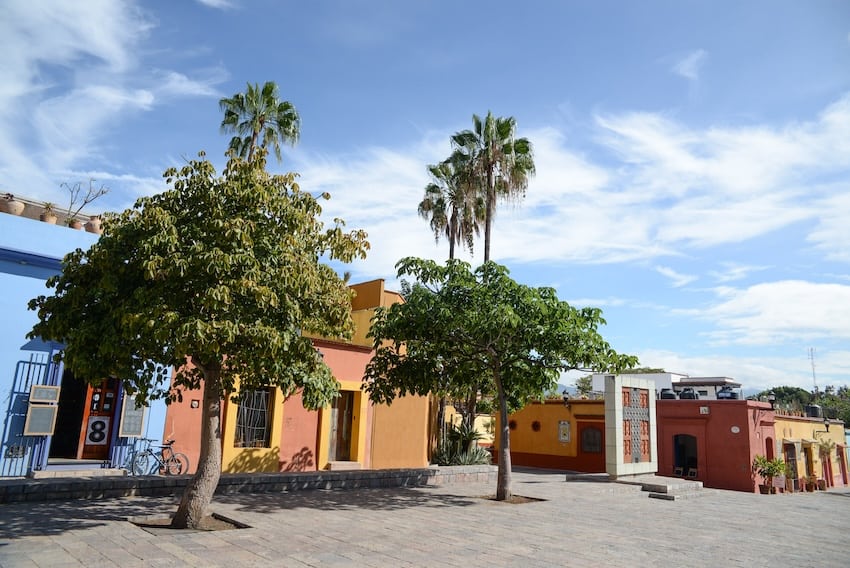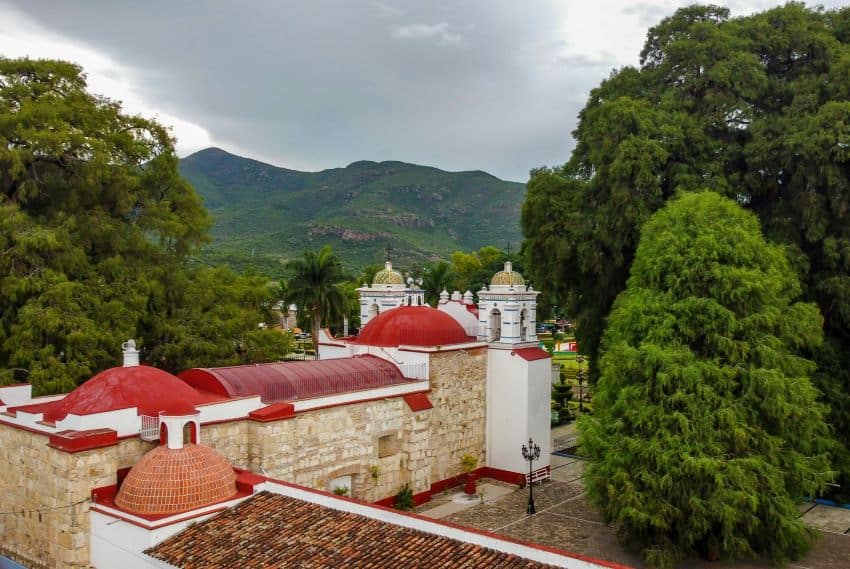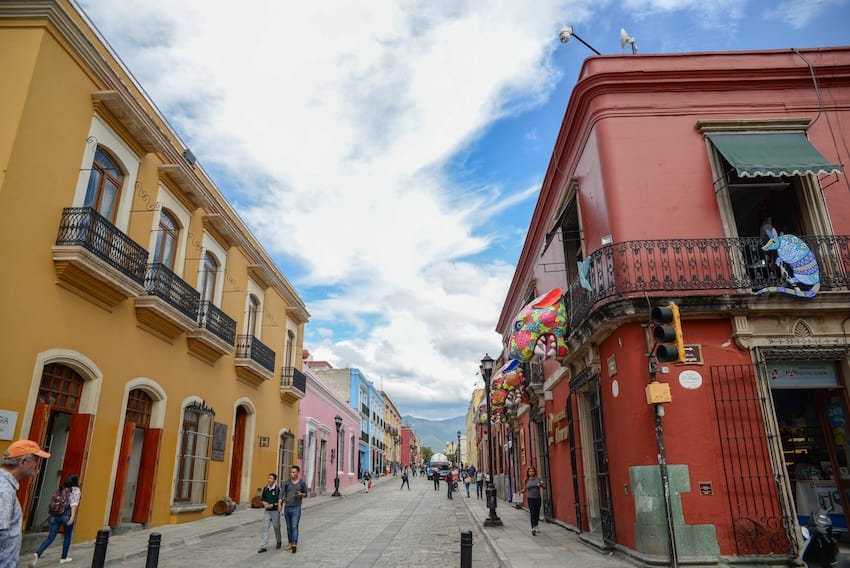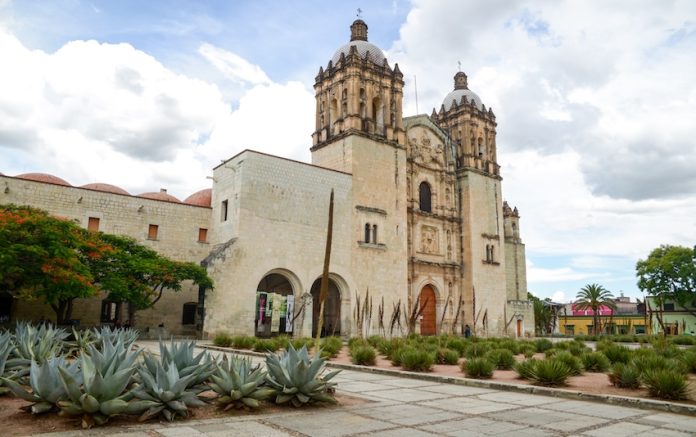As a photojournalist, I never pictured myself settling anywhere. For years, I never stayed anywhere longer than a few months, usually traveling extensively within that time. That was until 2013, when I first came to Oaxaca.
Oaxaca state lies in a mountainous region that stretches down to the southwestern border of Mexico. Oaxaca de Juárez, normally shortened to Oaxaca, is the state’s capital and largest city. Like many before me, I fell in love with the vibrant atmosphere, eclectic architecture and the overall vibe of the city.
![]()
Known for its delicious mezcal and sumptuous mole, Oaxaca is also a hub for beautiful textile and ceramic crafts. The city boasts colorful markets, numerous galleries and cultural centers. Lately there has been a wave of new boutique hotels, rooftop bars and trendy cafes.
With many structures dating back to the 16th century, the city has a strong connection to its history. In the last decade or so, a wave of new builds and renovations has added a contemporary flare.
I knew I wanted to be outside of the hustle and bustle of the historic center, which was becoming busier and more expensive every year. I eventually decided on a spot about a thirty minute walk from downtown with a more residential feel and beautiful views of Oaxaca city.
Fortunately, buying in the area was relatively straightforward. With the help of a local attorney, I completed the private sale, first making a deposit and then following with the rest of the full amount a couple of months later. I am a permanent resident in Mexico, which also helped make these transactions smoother, although it is possible to buy without being a resident.

Why are people investing in real estate in Oaxaca city?
During the COVID-19 pandemic, it became easier to get temporary residency through a process called normalization. It is clear that since the pandemic there are many more people looking to move to and buy property in Oaxaca city.
Mary Aquino of Re/Max Cantera, a brokerage in Oaxaca, explains that “there are many factors why not only locals but also foreigners are becoming more and more convinced to invest in the state of Oaxaca. In the case of locals, they are investing in the outskirts of the capital city, while foreigners are investing within the capital city due to its tourism and gastronomic appeal. While it is true that the prices are not cheap, it is a good investment for the future.”
Aquino considers the key areas that are growing include “the city center, El Tule, Huayapam, Etla and some of the most emblematic neighborhoods: Xochimilco and Jalatlaco.” In my opinion, San Felipe and Guadalupe Victoria are also areas with significant development. Each of these areas have their own identity and are suited to different living and working requirements. Recently, a wave of friends have moved further from the center to areas like Etla, El Tule and San Felipe.
The Etlas, El Tule and Xochimilco
The “Etlas” are several small communities about a half hour’s drive from Oaxaca city. Many people have moved there to be part of the creative network that has grown there. It is also an area with more water than most, which is a sought after commodity in Oaxaca.

Santa María del Tule, also known simply as El Tule, is a peaceful suburb famous for its massive Montezuma cypress tree. The town boasts market stalls and restaurants, as well as a bike track that takes you into Oaxaca city.
Most of my friends with children have moved to San Felipe. Rebecca Bailey, founder and editor of the Qué Pasa Oaxaca cultural guide, explained that she considered San Felipe “because we have a lot of friends there and it’s close to schools. Even though it’s kind of famous for wealthy politicians, there are lots of young families there because there are a lot of houses with gardens.”
The historic center
As Mary Aquino mentions, Oaxaca city’s two most emblematic neighborhoods are Jalatlaco and Xochimilco; east and north of the historic center, respectively. With cobblestone streets and striking street art, they are extremely charming.
Price per foot changes drastically depending on the distance from the city center. Aquino estimates a price per square foot in Oaxaca’s historic center at 2500 pesos, while the nearby area of Xochimilco is 1500 pesos per square foot. If the property has a luxury amenity such as a pool, expect this to be doubled.

John Harvey Williams, owner-partner at Real Estate Oaxaca, notes that “Real estate values in Mexico are the sum of the value of the land and construction.” “Land in Jalatlaco,” Williams says, “is valued at around US $100 per square foot. Construction is valued from zero for a tear-down to around US $75 per square foot for the finest quality construction and finishings.”
Empty lots in Jalatlaco, however, are few and far between. “I can think of only a half dozen that are empty now, and none of them are for sale,” Williams told me.
According to Dolores Pérez Islas, general director and CEO of the real estate investment company Silmexico, explains that prices in Oaxaca’s historic center start at US $180,000 for a two-bedroom, two-bathroom house. Homes in a great location on one of the neighborhood’s main streets in the main square command anywhere from US $800,000 to $1.5 million.
The carefully preserved colonial architecture, Pérez added, “gives a magic touch that every owner wishes to obtain. It’s surprising that there are still places like Jalatlaco, since it looks like it did 100 years ago.”

Value also depends on the legal and preservation status of the structure or land. Restoration should be carried out in compliance with guidelines provided by the National Institute of Anthropology and History (INAH’s) Oaxaca division, which dictates the preservation of primary features and the original layout.
Guadalupe Victoria
Guadalupe Victoria is an up-and-coming area of Oaxaca that has ejido status, meaning that the land is communally owned. In recent years, there has been considerable construction in the area. Architect Tom Van den Bout, who has several projects in Guadalupe Victoria, describes ejidos as self-governed and largely independent — from Oaxaca City, for instance. Some ejidos are truly communal, co-owned and regulated by all residents. Others, like Guadalupe Victoria, are still run by the founding families but allow sale of land to outsiders and all sales are registered with the ejido.
With over thirty years of experience, Van den Bout found the process relatively straightforward. However, the terms of buying land with ejido status can vary. According to Van den Bout, “Any ejido that is comunal would be virtually impossible to purchase into. Every resident would need to agree to the sale and agree in perpetuity. Your ‘purchase’ could be reclaimed at any time and living there often requires a form of community service. Most ejidal land beyond those near Oaxaca city, such as Guadalupe Victoria, is communal.”
Other things to consider when investing
The coast of Oaxaca is an area with similar complications when it comes to buying land. Per the Mexican Constitution, foreigners cannot own land within 100 kilometers of a land border and 50 kilometers of a beach. It is possible, however, to acquire property in this restricted zone through a fideicomiso (trust) or by constituting a Mexican company. As a buyer, you will be designated as the primary beneficiary. Aquino explains that “there are several companies offering this service and it actually works very well, but it can be a bit pricey. However, it provides much more peace of mind and confidence for buyers.”
If you are considering buying property in Oaxaca, Van den Bout suggests “looking closely to be sure the land can be legally sold and a deed will be issued in the buyer’s name.”
Aquino recommends buying privately when possible, ideally with a certified real estate agency. “Certified agencies are attached to a government institution that fulfills the function of safeguarding the rights of sellers and buyers.” Real estate brokers such as Remax or Silmexico take on the task of investigating the legal status of the property to prevent the client from having problems in the future. There are also excellent land use attorneys in Oaxaca.
Anna Bruce is an award-winning British photojournalist based in Oaxaca, Mexico. Just some of the media outlets she has worked with include Vice, The Financial Times, Time Out, Huffington Post, The Times of London, the BBC and Sony TV. Find out more about her work at her website or visit her on social media on Instagram or on Facebook.
